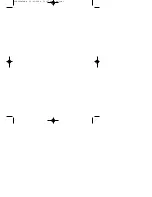
FC310x as master
FC3101 and FC3102
47
Version: 3.0
FC310x-Failed Counter
Sync-Failed Counter
: This counter will increment if TwinCAT task and DP cycle are not synchronized with
each other. This may happen during start-up of the TwinCAT system, after which this counter should no
longer increment. If the associated (NC) task does not have the highest priority, this counter can also
increment. This should be avoided.
Time-Control-Failed Counter
: This counter will increment if the PROFIBUS was not free at the time of the
DP cycle start. Possible causes are bus faults, non-existent device, a second master or a safety time that is
too small.
PLL-Overflow-/-Underflow-Counter
: This counter is only relevant during Sync mode "disabled" and will
increment in case of excessive jitter of the TwinCAT task which the DP cycle uses for synchronization (this
may happen, for example, if the DP cycle is not synchronized with the highest-priority task). If the associated
(NC) task does not have the highest priority, this counter can also increment. This should be avoided.
To-Statistics
For each MC slave the To-time specifies when, relative to the DP cycle start, the slave should accept the
outputs received from the master. The MC slaves can be synchronized with each other, if the same To value
is set for all MC slaves. However, this value must be equal or greater than the Equi-Cycle Time plus a safety
margin of approx. 200 µs. The To-time for all MC slaves is calculated with the button "Calc. Equi-Times" (see
above).
calc. To-Reserve
: This contains the calculated To-Reserve (To-Time - Equi-Cycle-Time)
min./max. To-Reserve
: Here, the min. or max. To-Reserve is measured.
Max. GC jitter (from TwinCAT 2.8)
Here, the maximum jitter of the DP cycle is measured (GC for global control telegram, which is always sent
at the start of a cycle). During start-up, the jitter may be somewhat greater, in the steady state it should not
exceed 1 µs (for Sync mode "Sync Master") or 2 µs (for Sync mode "Disabled").
















































